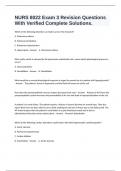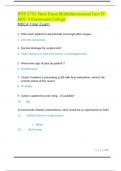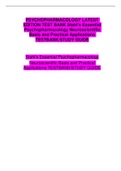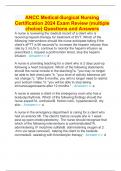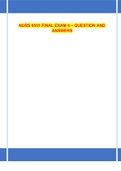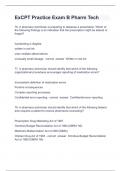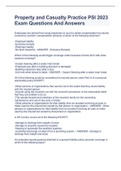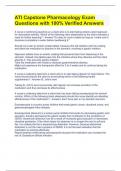Tentamen (uitwerkingen)
NURS 8022 Exam 3 Revision Questions With Verified Complete Solutions.
- Vak
- Instelling
Which of the following disorders can lead to a low V/Q mismatch? A. Pulmonary edema B. Pulmonary Embolism C. Pulmonary Hypertension D. Hypercapnia - Answer A. Pulmonary edema Nitric oxide, which is released by the glomerular endothelial cells, causes which physiological process to occur?...
[Meer zien]
